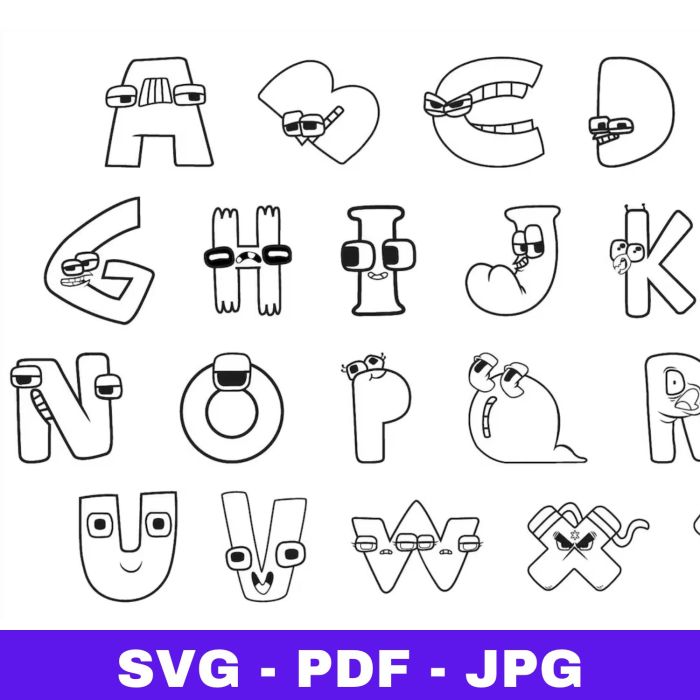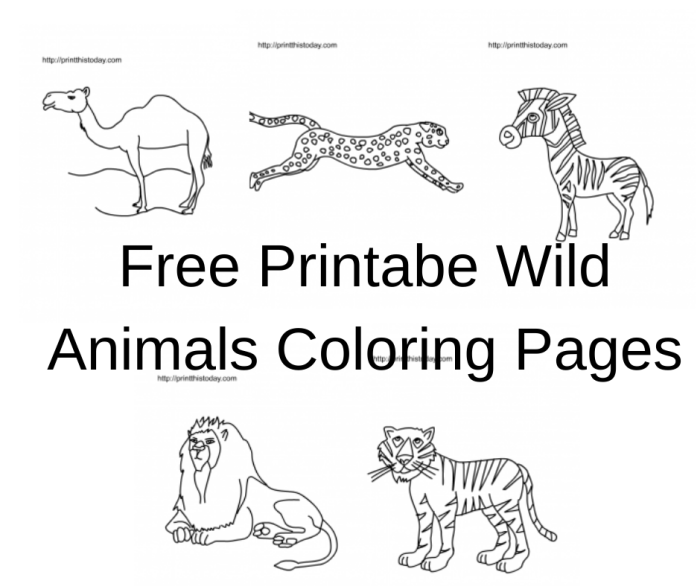Design and Layout Considerations

Creating a truly captivating Alphabet Lore coloring book requires careful consideration of design and layout. We’re not just slapping some letters on paper here; we’re crafting a vibrant, engaging experience that will delight young artists and keep their crayons busy for hours. The key is a thoughtful approach that balances aesthetics with practicality.
Logical Page Sequencing
The arrangement of pages should follow a logical progression, perhaps starting with simpler letter designs and gradually increasing complexity. This approach caters to a range of skill levels, ensuring that even the youngest colorists feel a sense of accomplishment. One could consider grouping letters by similar shapes or themes, or even weaving a narrative through the progression of pages, perhaps showing the letters embarking on an adventure.
The Alphabet Lore coloring book offers a vibrant introduction to letter-based characters. For educators seeking supplementary activities exploring buoyancy and density concepts, resources like coloring book sheets sinking swimming floating inspirational provide a valuable complement. These themed sheets can enrich the Alphabet Lore experience, adding a scientific dimension to creative play. This combination fosters both artistic expression and educational engagement.
A well-thought-out sequence will maintain engagement and prevent the book from feeling monotonous.
Paper Type and Printing Techniques
The choice of paper is paramount. Thick, high-quality paper (at least 80lb) is essential to prevent bleed-through from markers or crayons, ensuring that the vibrant colors shine through without muddying the artwork. Furthermore, matte paper is preferred over glossy to minimize glare and allow for easy coloring. Consider using high-quality printing techniques, such as offset printing, for vibrant, long-lasting colors that won’t fade with repeated handling.
The goal is a coloring book that’s as durable as it is delightful.
Book Cover Design
The cover is the first impression, and it needs to grab attention! A vibrant and engaging cover design is crucial for attracting young readers. Imagine a playful illustration featuring all the Alphabet Lore characters, perhaps in a dynamic scene that hints at the fun inside. The title, “Alphabet Lore Coloring Book,” should be prominently displayed in a bold, child-friendly font.
Consider incorporating a playful color scheme that reflects the energy of the Alphabet Lore universe. The cover should be both visually appealing and durable, capable of withstanding the rigors of enthusiastic young artists.
Sample Page Layouts, Alphabet lore coloring book
The following table illustrates potential page layouts, balancing visual appeal with practical considerations. A variety of layouts keeps the experience fresh and prevents repetition.
| Page 1: Single large letter A with simple background | Page 2: Two smaller letters B and C with more detailed backgrounds | Page 3: Four smaller letters D, E, F, G in a grid layout | Page 4: Full-page scene featuring A, B, and C interacting |
| Page 5: Letter H with intricate details and borders | Page 6: I, J, K, L arranged around a central image | Page 7: A simple maze featuring letters M, N, O | Page 8: P, Q, R, S in a playful, connected design |
Illustrations and Character Representation: Alphabet Lore Coloring Book

Creating compelling illustrations for an Alphabet Lore coloring book requires a delicate balance of capturing the characters’ established personalities while allowing for creative freedom in coloring. We must ensure consistency across the book, preventing any jarring shifts in style that might confuse the young artists. The following details offer guidance on achieving this harmonious blend of character and artistic expression.
Character Illustrations: F, A, and O
Let’s delve into specific examples. For “F,” we envision a mischievous grin, perhaps with one eyebrow raised in a playful challenge. His body should be slightly hunched, hinting at his often sneaky nature, while his clothing could be a vibrant, slightly mismatched outfit – perhaps a striped shirt with polka-dotted pants – to further enhance his chaotic energy.
His coloring page should include plenty of intricate details in his clothing to allow for extensive creative coloring.”A,” in contrast, should radiate a sense of calm authority. A gentle smile, a regal posture, and perhaps a simple, elegant robe would suit his personality. His coloring page should be slightly simpler than F’s, offering larger areas of solid color to allow for bolder coloring choices, representing his steadfast nature.Finally, “O” presents a unique opportunity for visual storytelling.
O is often depicted as somewhat enigmatic. We can illustrate this through his facial expression – perhaps a neutral expression with slightly wide eyes, conveying a sense of quiet observation. His background, as described later, will play a crucial role in emphasizing this. His outfit could be simple and unassuming, allowing the focus to remain on his expressive eyes.
Maintaining Character Design Consistency
Consistency is paramount. A style guide should be created, outlining key features for each character: body proportions, typical expressions, and clothing styles. This style guide should be meticulously followed throughout the book. For instance, “A” should always maintain his regal posture, while “F” should consistently display his mischievous grin. Slight variations are acceptable to reflect emotions (as discussed below), but the core characteristics must remain consistent to avoid visual dissonance.
Consider using a standardized color palette for each character’s basic clothing to further reinforce consistency.
Depicting Emotions on Character Faces
The ability to depict emotions is crucial for engaging young artists. Simple changes can drastically alter a character’s expression. For example, a slight downturn of the mouth can express sadness, while widened eyes and a raised eyebrow can suggest surprise or fear. A clenched jaw can portray anger, while a relaxed mouth can show contentment. The key is subtlety; exaggerated expressions might appear cartoonish and detract from the overall aesthetic.
Examples include showing F with wide, surprised eyes when he’s caught in a mischievous act, or A with furrowed brows when facing a challenge.
Background Elements to Enhance Visual Appeal
Backgrounds should complement the characters without overpowering them. For “F,” a chaotic, busy background with lots of hidden objects could enhance his mischievous nature. For “A,” a serene, minimalist background with subtle geometric patterns would emphasize his calm demeanor. For “O,” a mysterious, shadowy background with hints of intriguing elements could underscore his enigmatic personality. Consider using simple shapes, patterns, and textures to avoid overwhelming the coloring page and to ensure the focus remains on the characters.
Backgrounds should be designed to be engaging but not distracting. For example, a simple, patterned background for A could be contrasted with a detailed, almost labyrinthine background for F, highlighting the differences in their personalities.
Question Bank
What age range is the Alphabet Lore Coloring Book designed for?
The coloring book is primarily targeted at children aged 3-8 years old, aligning with the typical age range for coloring book enthusiasts.
What types of paper will be used in the coloring book?
High-quality, thick paper will be used to prevent bleed-through and ensure a satisfying coloring experience. The specific paper type will be chosen based on cost-effectiveness and optimal coloring performance.
Will there be different versions of the coloring book (e.g., hardcover, softcover)?
We are exploring the possibility of offering both hardcover and softcover versions to cater to different preferences and price points.
What are the plans for future Alphabet Lore coloring books?
Based on the success of the initial launch, we plan to develop a series of Alphabet Lore coloring books, potentially featuring seasonal themes or different character focuses.

